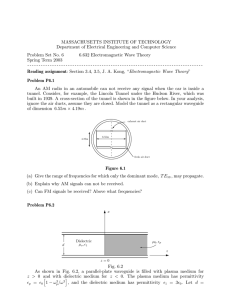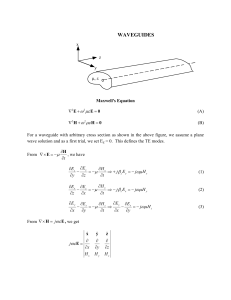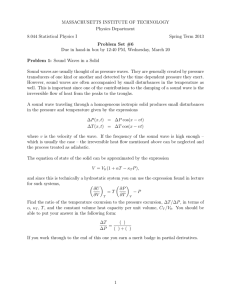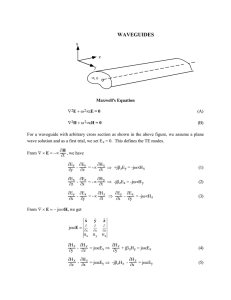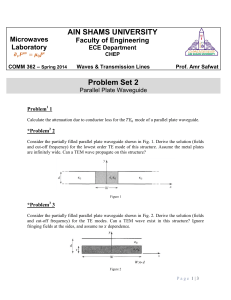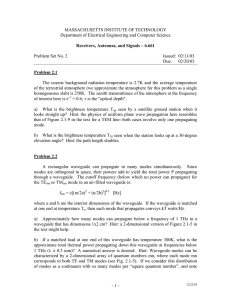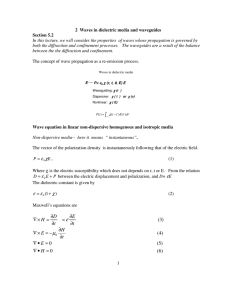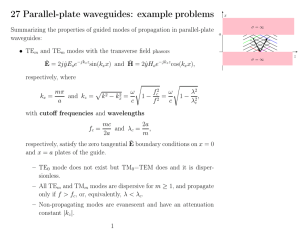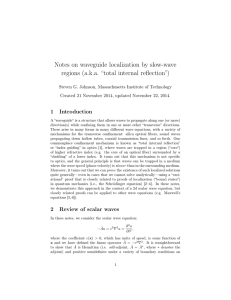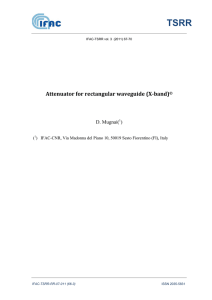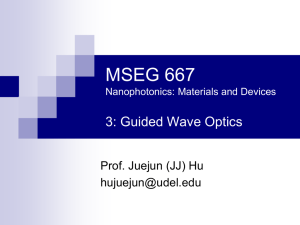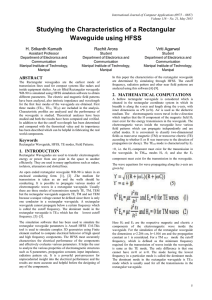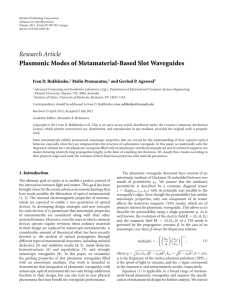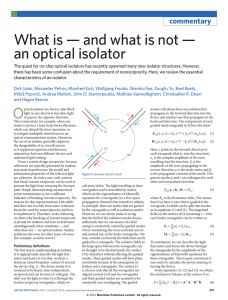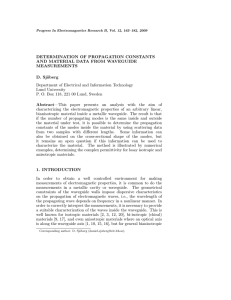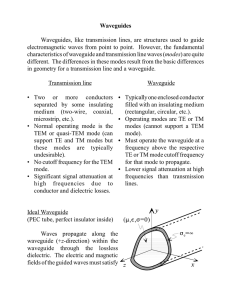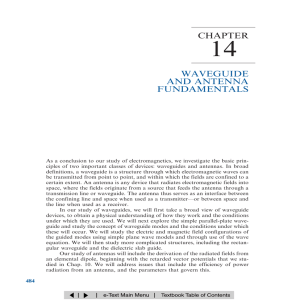Lecture 28
advertisement
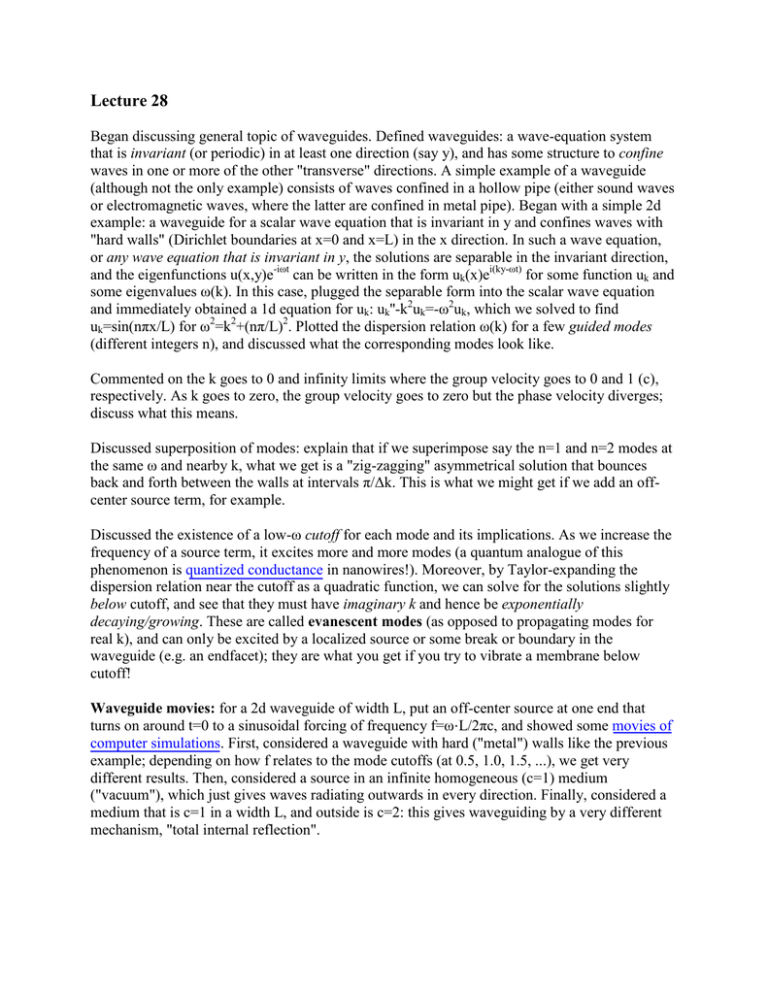
Lecture 28 Began discussing general topic of waveguides. Defined waveguides: a wave-equation system that is invariant (or periodic) in at least one direction (say y), and has some structure to confine waves in one or more of the other "transverse" directions. A simple example of a waveguide (although not the only example) consists of waves confined in a hollow pipe (either sound waves or electromagnetic waves, where the latter are confined in metal pipe). Began with a simple 2d example: a waveguide for a scalar wave equation that is invariant in y and confines waves with "hard walls" (Dirichlet boundaries at x=0 and x=L) in the x direction. In such a wave equation, or any wave equation that is invariant in y, the solutions are separable in the invariant direction, and the eigenfunctions u(x,y)e-iωt can be written in the form uk(x)ei(ky-ωt) for some function uk and some eigenvalues ω(k). In this case, plugged the separable form into the scalar wave equation and immediately obtained a 1d equation for uk: uk''-k2uk=-ω2uk, which we solved to find uk=sin(nπx/L) for ω2=k2+(nπ/L)2. Plotted the dispersion relation ω(k) for a few guided modes (different integers n), and discussed what the corresponding modes look like. Commented on the k goes to 0 and infinity limits where the group velocity goes to 0 and 1 (c), respectively. As k goes to zero, the group velocity goes to zero but the phase velocity diverges; discuss what this means. Discussed superposition of modes: explain that if we superimpose say the n=1 and n=2 modes at the same ω and nearby k, what we get is a "zig-zagging" asymmetrical solution that bounces back and forth between the walls at intervals π/Δk. This is what we might get if we add an offcenter source term, for example. Discussed the existence of a low-ω cutoff for each mode and its implications. As we increase the frequency of a source term, it excites more and more modes (a quantum analogue of this phenomenon is quantized conductance in nanowires!). Moreover, by Taylor-expanding the dispersion relation near the cutoff as a quadratic function, we can solve for the solutions slightly below cutoff, and see that they must have imaginary k and hence be exponentially decaying/growing. These are called evanescent modes (as opposed to propagating modes for real k), and can only be excited by a localized source or some break or boundary in the waveguide (e.g. an endfacet); they are what you get if you try to vibrate a membrane below cutoff! Waveguide movies: for a 2d waveguide of width L, put an off-center source at one end that turns on around t=0 to a sinusoidal forcing of frequency f=ω⋅L/2πc, and showed some movies of computer simulations. First, considered a waveguide with hard ("metal") walls like the previous example; depending on how f relates to the mode cutoffs (at 0.5, 1.0, 1.5, ...), we get very different results. Then, considered a source in an infinite homogeneous (c=1) medium ("vacuum"), which just gives waves radiating outwards in every direction. Finally, considered a medium that is c=1 in a width L, and outside is c=2: this gives waveguiding by a very different mechanism, "total internal reflection". MIT OpenCourseWare http://ocw.mit.edu 18.303 Linear Partial Differential Equations: Analysis and Numerics Fall 2014 For information about citing these materials or our Terms of Use, visit: http://ocw.mit.edu/terms.



